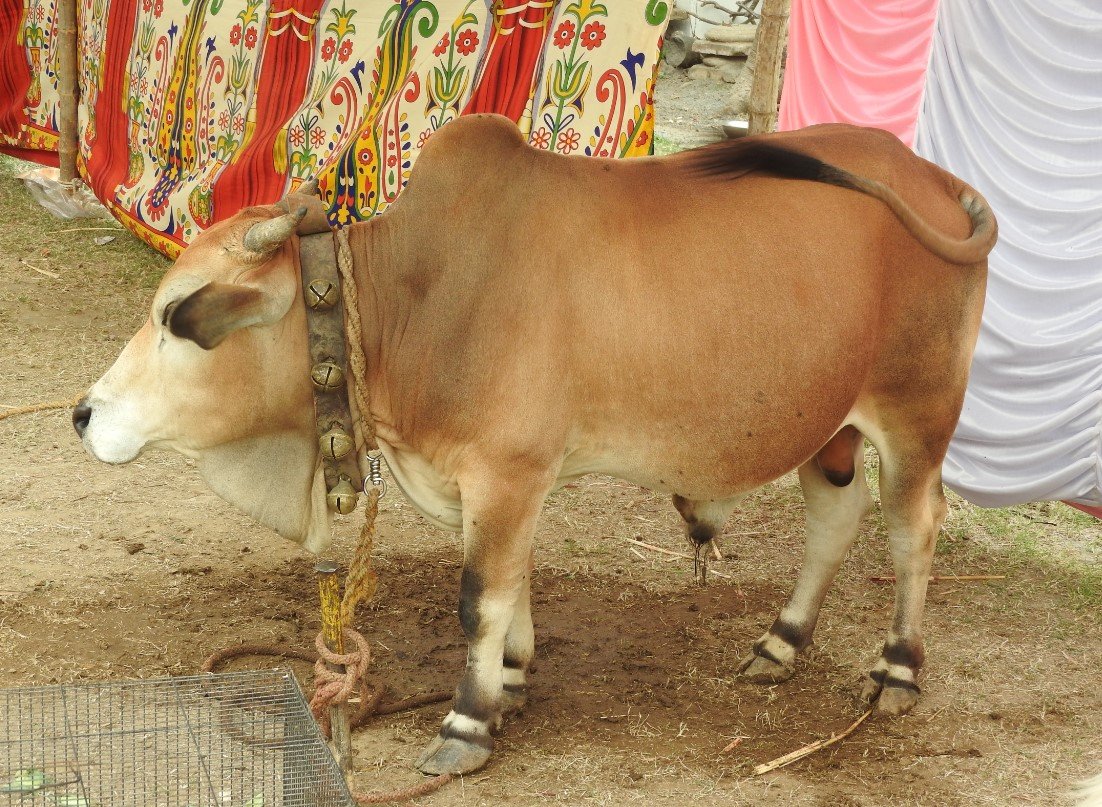India is home to many unique and diverse animal breeds, but one of them stands out for its size and cuteness. The Punganur cow is a rare and indigenous cattle breed that is native to the Chittoor district of Andhra Pradesh. It is one of the world’s smallest humped cattle breeds, with an average height of 70-90 cm and an average weight of 115-200 kg. It is also known for its high-fat milk, which is richer than cream and has medicinal properties.

The origin and history of the Punganur cow
The Punganur cow is named after the town of Punganur, where it was developed by the Rajas of Punganur in the 15th century. The breed is believed to have descended from the Ongole cattle, which were brought to the region by the Vijayanagara kings. The local hill cattle and the Sahiwal cattle from Pakistan also influenced the breed.
The Punganur cow has a long history of being revered and valued by the locals for its cultural and economic significance. It was used for milking and light agricultural work, and was also offered as a gift to the temples and the royalty. The milk of the Punganur cow was used for Ksheeraabhishekam (milk offering to the deity) in Tirupati Thirumala Temple, as it contains traces of gold. The breed was also considered auspicious and lucky, and was associated with prosperity and fertility.
The characteristics and features of the Punganur cow
The Punganur cow is mainly white or grey in color, but can also be light brown, dark brown, or red. It has a broad forehead and short horns that are crescent-shaped and often loose. It has a long, thin tail and a small hump. It has a gentle and friendly temperament and is easy to handle.
The Punganur cow is well adapted to the harsh climatic conditions of the region and can survive on dry fodder such as grass, straw, hay, and so on. It is also resistant to diseases and parasites, and has a high fertility rate. It can produce up to 3-5 liters of milk per day, which has a fat content of 8-12%. The milk is nutritionally rich and has many health benefits, such as boosting immunity, improving digestion, and curing skin problems.
The conservation and promotion of the Punganur cow
The Punganur cow is a treasure of India that deserves to be preserved and promoted. However, the breed has faced many threats and challenges over the years, such as crossbreeding, urbanization, mechanization, and neglect. The population of the Punganur cow has declined drastically, and it is now classified as a critically endangered breed by the National Bureau of Animal Genetic Resources (NBAGR).
To save the Punganur cow from extinction, various conservation and awareness efforts have been taken by the government, NGOs, and individuals. The Andhra Pradesh government has provided financial support and incentives for the farmers who rear the Punganur cow. The central government has established Gokul Grams (integrated indigenous cattle centers) for the conservation and development of the Punganur and other native cattle breeds. The Tirumala Tirupati Devasthanams (TTD) has also set up a goshala (cow shelter) for the Punganur cow and has been conducting research and breeding programs.
The Punganur cow has also gained popularity and attention recently, when Prime Minister Narendra Modi fed and caressed the cows at his residence on the occasion of Makar Sankranti on January 14, 2024. He posted a video of him feeding the cows on his Instagram account, which went viral on social media. People were amazed and curious about the breed and its characteristics. PM Modi’s gesture was seen as a way of promoting the conservation and awareness of the indigenous cattle breeds of India. By showing his love and respect for the Punganur cow, he also showed his appreciation for the rich and diverse heritage of India.



















